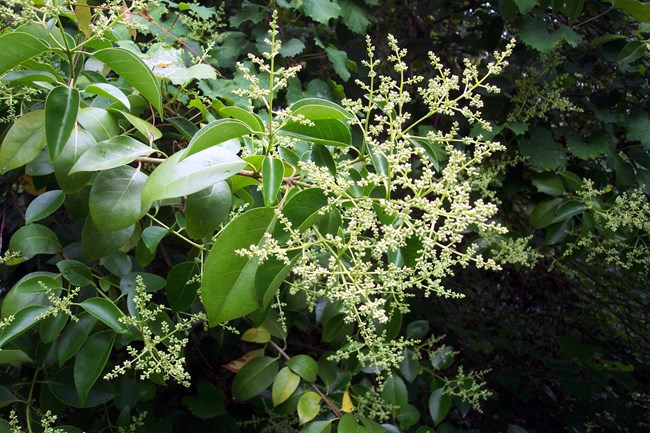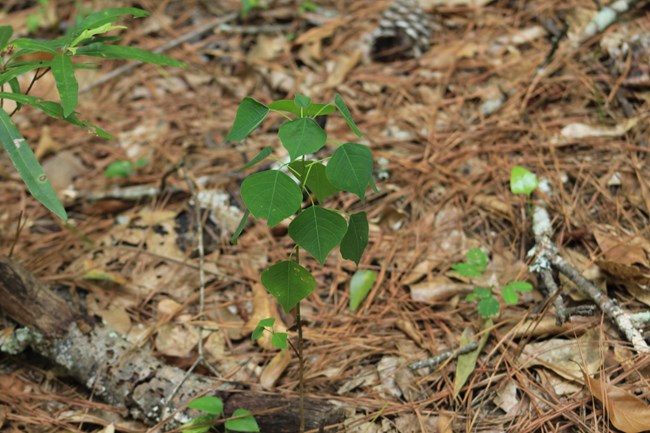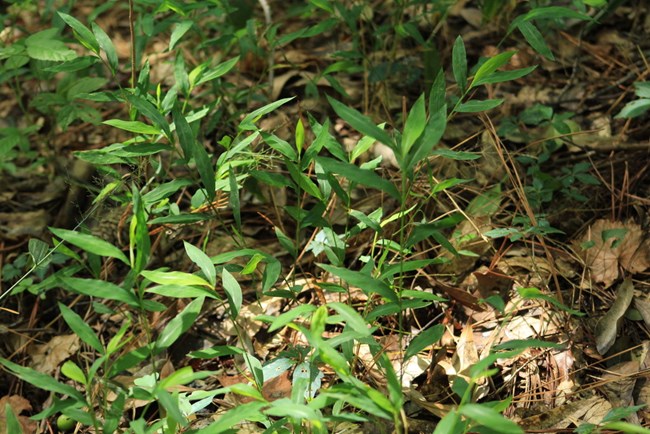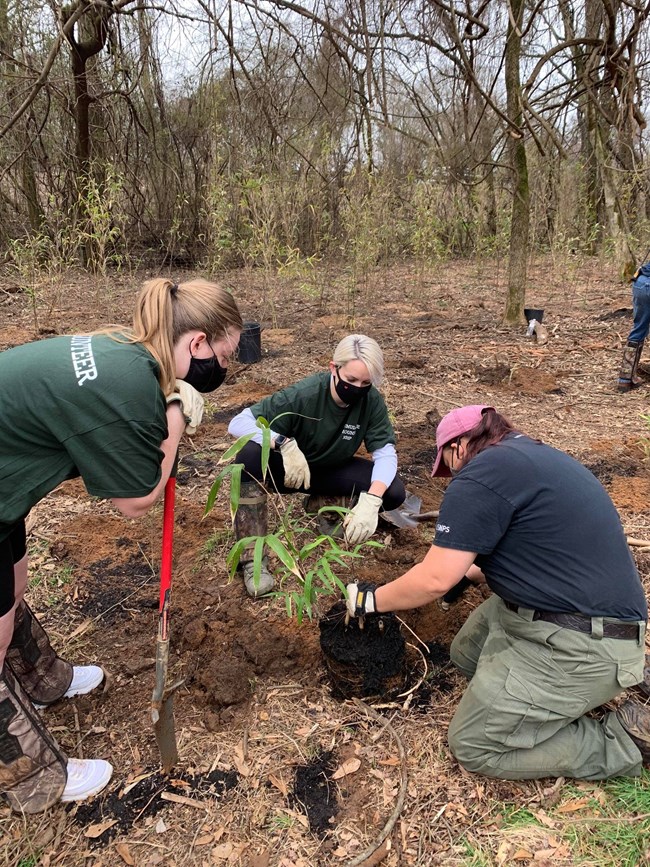
NPS/Valdez What is an invasive species?An exotic species is an organism that is not native to an ecosystem. An invasive species, on the other hand, is an organism that is not native to an ecosystem and causes harm to it. Not all exotic species are considered harmful or invasive. Invasive species can be plants, animals, insects, fungi, or any other living thing. At Ocmulgee Mounds National Historical Park, invasive plants are of great concern in resource management.
NPS/Valdez How can exotic plants be harmful to an ecosystem?In healthy ecosystems, native plant populations are kept in balance by disease, climate, disturbance (like flood or fire), and predation by insects and animals. Exotic plants that are introduced to an ecosystem may not have any predators or be affected by other natural controls. This gives the invader an advantage in the competition for resources like sunlight, nutrients, water, and space. Invasive plants can damage an ecosystem when they outcompete and displace native species. Ecosystems are interconnected, and many other organisms rely on native plants for food and habitat. Exotic plants are often poor substitutes, so insects and wildlife may suffer when an ecosystem is dominated by non-natives.
NPS/Valdez How do invasive plants get introduced to new areas?Most exotic plant species are brought into an ecosystem by human activity. Seeds can be carried to an area by accident on clothing or equipment, or in shipping containers. Sometimes plants are intentionally introduced as ornamentals, then spread and become invasive. Exotics may also be brought into an ecosystem by animals, wind, or water.What invasive plants exist at Ocmulgee Mounds National Historical Park?While some exotic plants pose no threat to the park’s ecosystems, others have the potential to dramatically alter the landscape and outcompete native plant communities. Thirty-six species have been targeted for ongoing monitoring and containment. Some of the most abundant invasive species in the park are privet, tallow, and stiltgrass.
NPS What do we do now?The Natural Resources team has dedicated staff members who work hard to control the spread of invasive plants within the park. Biological Science Technicians map, monitor, and remove exotic plants. In some areas native species are planted in their place.Ocmulgee Mounds National Historical Park also works closely with the Invasive Plant Management Team (IPMT) and numerous volunteers to help protect the native landscape. Want to lend a hand? Click here to learn more about volunteer opportunites in the park. Interested in learning more about invasive species? Click here for more information. |
Last updated: April 25, 2021
